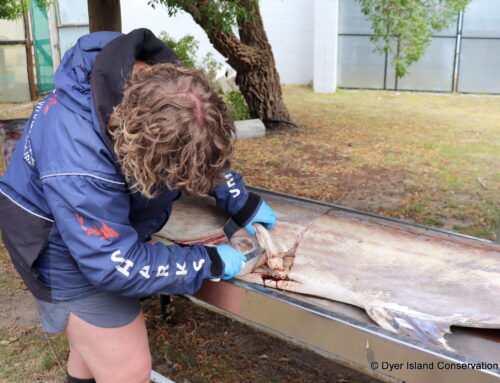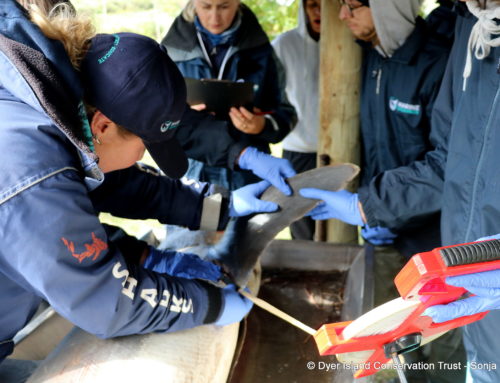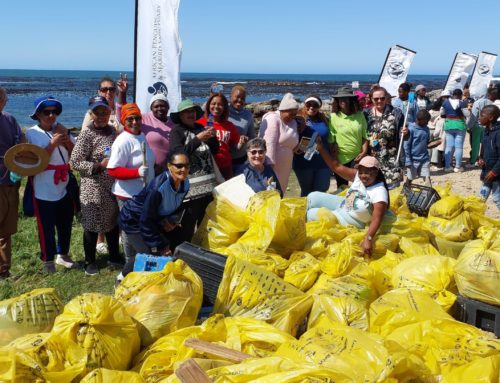FIRST STUDY OF SHARK WOUND HEALING
June 03, 2010 by dyertrust
First study of shark wound healing
Towner said: We had the unique opportunity to observe this shark from the surface and underwater following the accident. This provided a unique opportunity able to make detailed study of the animals ability to heal from a major wound.

The tolerance to such chronic wounds in the species appears to be remarkable, and the same scope of wound on a marine mammal for example, would surely have caused fatality.
Given the increase in maritime traffic for commerce and recreation it is important that we study wound healing in marine species such as the Great White Shark. Currently, we have very little information about their survival and recovery, Towner said at the symposium.
Trusts researchers to join international shark project
The area off Dyer Island has one of the most dense populations of Great White Sharks in the world.
With eco-tourism partner,
Participants hailed from South Africa, Namibia, Mauritius, Kenya, and Zanzibar. Of the fifty delegates were researchers, students, government officials, and tourism operators. Well known names included Prof. Peter Best and Prof. Elissa Cameron (MRI), Mr Mike Meyer (Oceans & Coasts previously Marine & Coastal Management), Dr Ken Findlay (University of Cape Town) and Dr.Vic Cockcroft (Director of the Centre for Dolphin Studies-Plettenberg Bay).

In order to start thinking about regional research and conservation priorities, the impacts that humans have on marine mammals and their habitat were highlighted. Areas of concern are oil and gas prospecting and production, commercial and artisanal bycatch, directed fishing, habitat degradation, coastal development, tourism, noise and environmental pollution and climate change (which may, or may not, be a negative effect).

A message that was repeated time and time again during the colloquium was a need for further cooperation and collaboration between groups. The South African research community outlined the data and samples currently in storage.
The International Whaling Commission (IWC) has called for alternative methods to those currently used by Japan in their scientific hunting of whales in the Antarctic oceans. The Australian government has sponsored this research and thus a programme called the
They are a medium size dolphin with total lengths at 2.0-2.4 meters. They are a shallow water species that are found in depths less than 15 meters commonly just behind the breakers.
The stranded dolphin was collected in the early morning by
It was then examined by Mike Meyer and assistant Steven (DEAT/MCM), and Ingrid Peters (University of PretoriaMarine Mammal Research Institute).
Due to the highly decomposed state of the dolphin, the cause of death was difficult to assess. The dolphin was missing its fluke (tail fin), but it is unclear whether this occurred before or after it had stranded. As it is a rare species, the skeleton of the dolphin was collected and brought to Iziko Museum in Cape Town.
Thanks to Mike, Steven, and Ingrid for providing guidance as well as handling all the smelly work!



.jpg)

.jpg)




